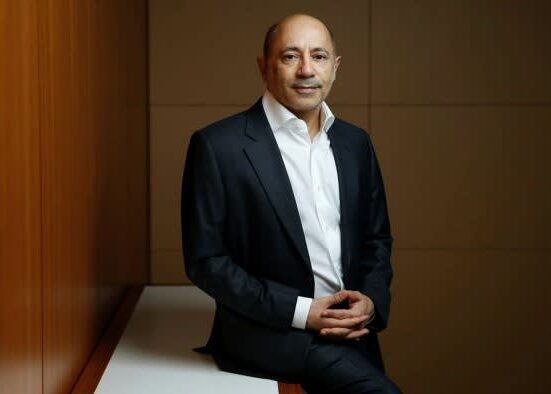With a varying but undeniable frequency, works of art — sooner or later — make headlines when gavels are banged at auctions. As demonstrated by the most expensive piece up for grabs so far in 2023, it’s clear that art — in addition to being beautiful — can be very profitable if the stars align.
The painting in question — Lady with a Fan, by Gustav Klimt — was sold this past June 28 for €97.71 million, or $103 million. Most notably, the previous acquisition of this work occurred in 1994, with a price of €8.97 million euros, or $9.5 million, more than 10 times less than the current price.
Profitability isn’t just exclusive to Klimt. In its Luxury Investment Index — which measures the performance of various luxury items — the real estate consultancy Knight Frank identified art as the king of all the so-called “passion goods” in the last 12 months. Its 30% average return triples the performance offered by the second and third groups on the index: watches and jewelry. Hence, the big question isn’t whether or not art can be profitable, but rather, whether such profitability is only available to a select few.
To answer this question, it’s advisable to first look at the characteristics of the art market. It’s diverse and — although it’s especially difficult to make general distinctions about it — it’s not impossible. The first thing to know is that, in the art world, there is a primary market and a secondary market.
The primary market implies that the art in question is purchased from galleries, or directly from the artist. The secondary market is the one in which the works that someone previously acquired are sold, as occurs in auctions, or in sales between individuals. Each market has its own codes and rules that should be understood in depth before one even considers art as an investment.
A general overview
In the primary market, many artists have exclusivity contracts with specific galleries: they cannot sell their work to other people, except in rare and authorized exceptions. And, regarding the secondary market, the catalog is quite extensive: there are works with a price range that oscillates between hundreds of dollars and millions of dollars. In the latter category, there’s more room for haggling.
Purchases are made with either the short or long-term in mind, with the latter being much more common and logical. Rafael Lozano — a specialist and advisor in the secondary art market — explains that, in his sector, the opportunities to make profits quickly are rare, although they do arise from time to time. “For whatever reason, sometimes, they show up. People may no longer like their work of art, [they may] need the money quickly… or they’re looking for something new and are getting rid of what they already had,” he adds. However, these would be exceptions to the rule, since the norm is that a buyer of art has to wait years to obtain profitability. “The profile of an investor who seeks immediate profitability should forget about art,” Lozano summarizes, in a phrase that vaguely recalls the warning that can be read at the gates of hell in Dante’s The Divine Comedy: “Abandon all hope, ye who enter here.”
Literary hell aside, in this world, there are also levels, but of risk. Lozano highlights a point about protecting your investment: acquiring a work by an emerging artist who is still alive is not the same as acquiring a piece by an established artist who has already passed away. The consultant explains the reason for these different levels of risk, alluding to one of the most famous Spanish painters. “[Works by] Picasso go up in price every year. If you want certainty, you have to go to the secondary market and look for very established artists. These are cases of internationally-recognized artists. There’s a lot of demand… [this market involves] a lot of snobbery, trendiness and prestige. In the end, however, it’s just like any other market. In the case of deceased painters, there’s no more production. And, since there’s no more production — combined with a lot of demand — the prices rise,” he explains.
The idea of an asset that always tends to increase in price is implausible (and rightly so). But to clarify, it could be said that, in the case of a certain type of art, the certainty of revaluation is greater than alternative investments. In other words, a Picasso will always be a Picasso.
Amalio Herrero — the director of the Herrero de Tejada gallery in Madrid — makes the point that not all works of art are the same, no matter how renowned and prestigious the artist may be. “From an investment standpoint, [even when it comes to] an established artist, not all of his works will have the same value in the market. It may so happen that the work you own belongs to a series that isn’t important or attractive.”
While it’s certainly true that only very few people will be able to afford a Picasso, this doesn’t mean that the world of art is reserved for the richest individuals. The safest investment options indeed are exclusive, but it’s in the field of emerging artists (the riskiest option) where small investors or art lovers without large budgets have an opportunity to play the lottery.
Works of art or lottery tickets?
We must take into account that the art market fluctuates. This was recently witnessed when it suffered a downturn during the bursting of the real estate bubble. There are also cycles that change the predilection for one or another kind of art. This all presents a danger when one purchases a work by an emerging artist solely with a view towards future profitability, since nobody can see the future.
“In my humble opinion, investing in emerging artists is like playing the lottery,” Lozano warns. “Many factors come into play. Fashion, the tastes of each country… maybe a work that is not liked at all in Spain will triumph abroad, or vice versa. It’s much more complicated than we think. It’s a bit like the stock market. It fluctuates. An artist can fall from grace,” Lozano shrugs.
Herrero adds that the smaller their budget, the more obliged an investor is to know the market in depth. If you want to make a profit, you should do so only when you have an idea about the potential development of the artist whose work you wish to buy.
“This requires us to know the context of art in depth,” the gallery director emphasizes. “It’s a complex world, even for me as a professional trying to keep up with what’s going on. That’s why — to be an investor — the level of knowledge one must have about the art world needs to be very high. Failing that, [decisions can be made] with the help of an expert,” he recommends.
Both Lozano and Herrero agree on several points. Both men think that buying art with the expectation of profitability is a gamble, while they both advise that purchases should be made with the assistance of an art expert. They also think that those who wish to buy a work of art should do so only when motivated by something more than the mere desire for profit.
“You should start buying art because you like it. You enter [the art world], little by little. And, once you know certain codes, it’s possible to start acting like an investor. Entering the art world as an investor without having knowledge or a good expert [by your side] is very tricky,” Herrero warns.
“There are several axes,” he adds. “The world of galleries [is diverse]: Paris, New York, Hong Kong, London. What happens in each of those markets, what investors are betting on in each cycle, what type of current is most in vogue… investing in art without all of this knowledge is suicide. It’s like playing the lottery,” the gallerist reiterates.
“For me, small investors shouldn’t just think about investment, since the product is so high-risk. This type of investor should enter the world of art by acquiring works that fulfill them, that they like… works that inspire them to get closer to the world of art and galleries. And then, from there, when they decide to purchase works starting from that base of passion, they must have the necessary eye to know that the piece they buy is worth it. If the work is good and has a reasonable price, sooner or later, it will deliver results.”
“For me, these small investors [need to be thinking] in the medium to long-term, approaching the artworks with knowledge or while well-advised. They must know that few products will later multiply in value. It doesn’t happen every day,” the gallery director concludes.
For his part, Lozano estimates that approximately 90% of the people who come to the secondary market are art lovers. In general, they start by buying what they like and then, secondarily, comes the concern for profitability. “A purely investment-based approach requires going to the [big names] and waiting. But, if you like what you bought, if you don’t sell it later, at least you have something you like,” he concludes.
Art can be an investment that’s not only reserved for the wealthy. However, what it shouldn’t be is an uninformed investment, especially given the subjective and multifaceted nature of this luxury good.
Sign up for our weekly newsletter to get more English-language news coverage from EL PAÍS USA Edition







